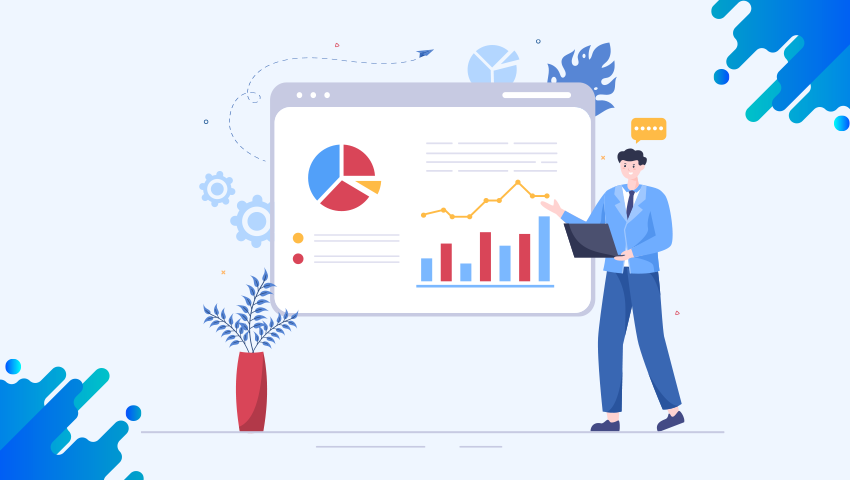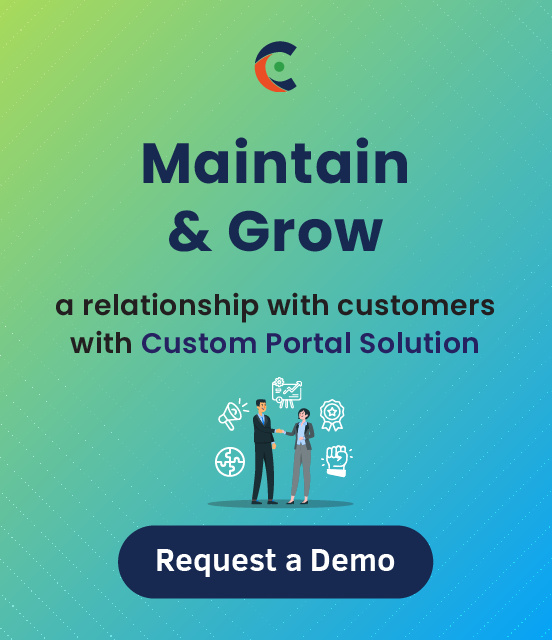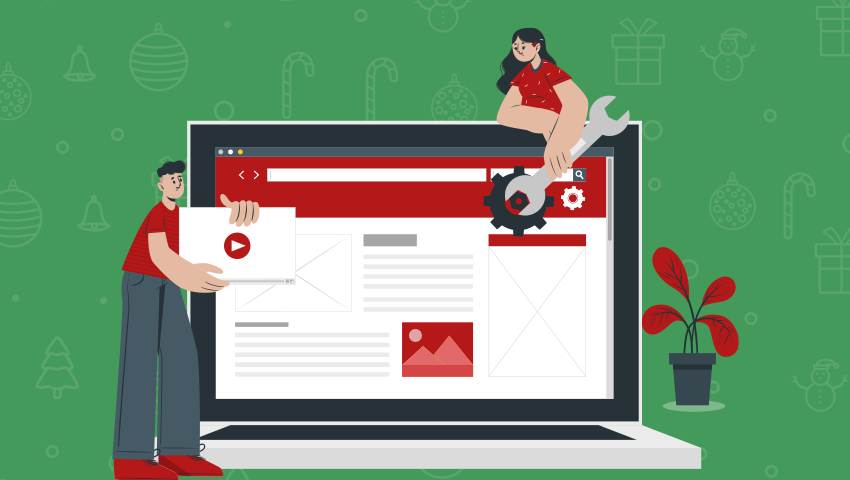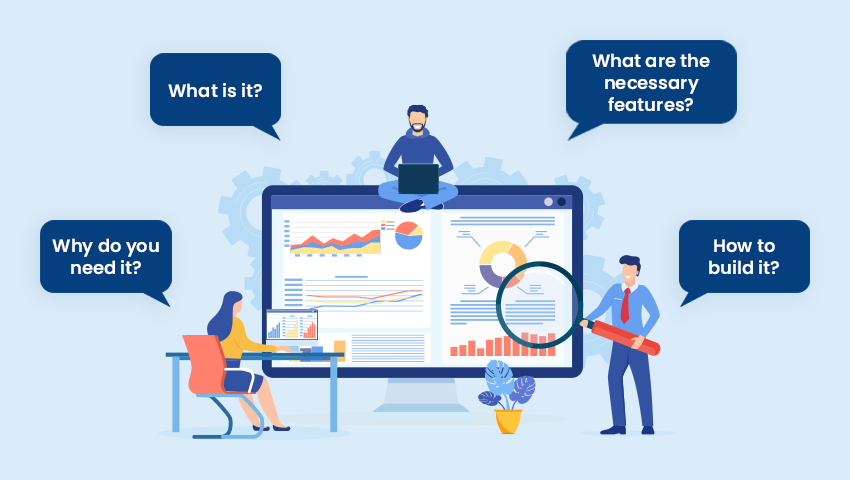Last year many companies such as Slack, Twitter, Shopify, Upwork, and Facebook embraced the permanent work-from-home culture. Remote work forced by the pandemic has proven that employees can work productively from home as much as they can from the office. But the real challenge was – implementing remote work. Miscommunications, inefficient operational management, misinterpretation, delays in delivery, security concerns, etc. disrupted the entire business flow.
Many tools emerged to handle this. Businesses started using Zoom and Google Meet for meetings, tracking tools to manage employees’ work. The biggest benefit of these tools and remote culture shift was increased accountability. Employees took care of their activities themselves. And now, when the digital transformation has become the holy grail, it’s essential that you provide them with that level of comfort – whether they’re working from home or office.
Let’s figure out how to improve their experience with employee portal development.
Topics covered are:
- What is an Employee Portal?
- What are the Benefits of an Employee Portal?
- Features of Employee Portal
- What are the Best Practices to Develop an Employee Portal
- Why Should You Build a Custom Employee Portal?
1. What is an Employee Portal?
In general, all the companies today are associated with IT solutions. Perhaps you might have come across solutions like ‘employee portal software’, ‘intranet portal’, ‘self-service portal’. You can say that they are pretty much the same. Their message at the core is the same
‘A digital workspace that provides employees with a wealth of information and tools to speed up their work and communicate with others effectively.’
An employee portal serves as a single point-of-access to personalized content, communication services, and operation management. It offers data access, transactions, security, chats, videos, conference calls, and more.
2. What are the Benefits of Employee Portal
Employee portal helps businesses succeed by improving employee experience, productivity, and retaining staff. A 2017 Forbes article shows that happy employees help organizations thrive in all aspects – sales, customer satisfaction, and business expansion.
There are numerous benefits of employee portal development.
Helping Employees Get Right Answers
An employee portal makes a wide range of resources available like HR policies, pay, accounts, advice, and more, which means employees can find answers to their questions themselves. In addition, search capability allows them to enter search terms, and they can find answers instantly. If they cannot find relevant information in the knowledge base, they can chat with the relevant person or create a case that will automatically be assigned to the relevant expert.
An employee portal provides you a way to interact with the employee and encourage them to ask questions and doubts.
Improving Services
An employee portal with self-service capabilities cuts inbound queries, cases, questions, and inquiries by around 50 percent and makes operations efficient. This reduction in the workload helps HR and other teams to focus on higher value-added activities and deliver excellence in operations.
Offering Consumer-level Experience
The technological expectations of employees have increased thanks to the consumer apps – Instagram, Facebook, and Google that offer simple and intuitive processes. The days of dealing with traditional approaches are gone. Employee portal offers intuitive design with customizable features. Each employee can customize their digital workspace and make most of the knowledge base and chat features.
Increasing Employee Engagement
An employee portal with self-service capabilities and consumer-grade experience improves the employee engagement level. According to Accenture, companies with increased employee engagement are 21 percent more profitable than those with less engagement.
Live chat and AI chatbots integrated into an employee portal are adapting to the changing employee behavior, helping them engage with HR and other teams in the way they prefer.
Increasing Workflow Productivity and Performance
The more people work on delivering the same services, the less will be the productivity. An employee portal with features such as self-service, case deflection, knowledge base, automated workflow, reduces the workload on delivery teams. It means it takes fewer resources to do the same amount of work. By adopting employee portals, output increases, and so does productivity. You can allot free resources for other priority activities.
Reduce Cost of Delivery
When employees can find answers on their own, it saves the delivery team’s time and helps them cut down on their service costs. For instance, they don’t have to arrange training sessions for every new employee. They can share videos and guide them. Third-party integrations will further ensure they have all the tools in one place.
An employee portal provides data to manage business operations and make sound decisions that help improve overall performance and operations.
Know how we can help you enhance your employee’s experience with an employee portal development.
Or you can dive into some of the feature lists that can help you improve performance.
3. Features of Employee Portal
Dynamic Pages
Knowledge sharing is one of the essential factors of employee management. With an employee portal, employees with sufficient permissions can contribute to it. They can write simple articles, share documents/internal files, publish forms, create a dashboard and intuitive web pages with simple drag & drop. They can also track their progress and document details with version control.
Activity Feed
An activity feed helps get an overview of the ongoing activities and post announcements and company news or questions. The news feed in the employee portal brings all updates together: comment notifications from pages, content updates, new form submissions, status updates, etc. You can also follow up with specific departments to know about the activities there.
Form Management
Form management makes it easy for you to create dynamic pages and forms. With simple drag & drop, you can build custom online forms and process different kinds of workflows. For example, you can create forms for leave of absence requests, travel expense reimbursement, room bookings, timesheets, etc. Further, you can configure the settings as to which team/individuals will be notified when a new form is issued or a status update.
Employee Directory
This works like social accounts. Everyone in the company can have a profile with contact information, expertise, bio, documents, contributions, and more.
The employee directory will give an overview of an employee. Everyone in the company can access the details. You can also restrict user access with the help of role-based access. This feature will limit access to specific profiles or the entire directory.
More Features
To enable your team to access certain information themselves, give them access to resources such as:
- Payroll Management: Include forms, leaves, and other payment details.
- Time and Attendance: Allow the team to shift schedules, manage policies and information about approved leaves.
- Benefits Information: Include links to enrollment documents and benefits details such as insurance policies, retirement plans, tuition assistance programs, vacation/sick time availability, etc., along with beneficiary forms.
- Workplace Policies: Let your employees quickly access Workplace policies, safety measures, holiday schedules, and more.
- Company News: Share latest updates, new hire announcements, current openings, achievements, and other information.
- Job Openings: Share your openings with your team. They may help find suitable candidates for the position.
- Upcoming Training: Keep your team updated about the upcoming training, whether it’s related to a project or soft skills. Let them know in advance so that they are well prepared.
- Live Chat: Streamline internal communication by allowing teams to communicate with one another.
- Case Tracking: Know about employee queries and its status – whether it’s resolved or still in the queue. Help them clear out their doubts and questions quickly. Create a help desk for quick questions on policies and procedures.
- Employee Recognition: Improve workspace culture by creating a space for employee shout out and recognition.
- Portal Configuration: Let every employee have a custom view of their digital workspace.
These are a few of the other features to include in your employee portal. To create a proper list of features, take an expert’s advice.
CRMJetty has 14+ years of experience in developing and delivering portal solutions for different industries. We can be your guide in your employee portal development journey.
4. Employee Portal Development Best Practices
If you want to greatly impact your employees, don’t avoid the red flags. And if possible, implement these trends. They won’t give an instant result but will help in the long run.
Personalized Content and Interface
Too much information confuses people. It also impacts productivity and performance. Hence, ensure that your employee portal gives employees options to choose what information they would like to receive, who they would like to follow, and more.
Native Apps
People prefer smartphones over laptops and computers, whether it’s for working or entertainment. So, go for a mobile-friendly approach. It will make working-on-the-go easier, optimize performance and eliminate regional borders.
AI Chatbots
Machine learning has transformed our lives. It has brought in new opportunities in the form of AI. No wonder they are improving employee experience. AI chatbots help automate the workflow and ease onboarding. Though it may not clear all the misunderstandings and dialogue nuisances, it does help to a certain extent in solving basic queries.
Third-Party Integrations
Integrations with ERP and other third-party plugins are a must as it eliminates the hassle of switching between apps. The APIs connect a single space for your employee portal and the systems that you use.
So, integrate social tools like Slack, Yammer, Chatter, and Microsoft teams to encourage engagement between your employees and teams.
Analytics
An employee portal influences the productivity and performance of your staff. And knowing what action resulted in the final result is essential. So, gather employee data and understand their behavioral pattern. Identify what helps them and how they engage, accomplish tasks, etc. Also, collect engagement statistics, employee feedback, task management, and reporting.
Apart from these practices, you can tailor your employee portal for a specific purpose like HR operations, workflow management, payroll, etc.
5. Why Do You Need Custom Employee Portal Development
An employee portal can change the internal flow of the business and get your team engaged.
And the better option to develop an employee portal is – custom employee portal development (according to me).
A pre-built employee portal solution is good. It offers a pack of features that you can customize to your business requirements. Testing and adoption are smooth too. However, the implementation may or may not be upto the mark. The features and the software flexibility are another concern.
On the other side, developing your own employee portal takes more time and resources. But you get to choose the design, features, and integrations. You can hire a development company and build your portal just the way you want. Moreover, a custom solution is more flexible. It means you can tweak and add new features as you grow. Last but not least, you have an IT partner to support you.
How to Develop an Employee Portal
Quick answer: Partner with a portal development company and build a custom solution.
But for that, you first need to perform these actions:
- Define the reason you need an employee portal. You want to cut down operational expenses, automate tasks, boost employee engagement, etc.
- Understand your employees and business requirements. Talk to your employees and supervisors and gain valuable feedback.
- Jot down the things that you want to include – features, design, and integrations.
Once you have a complete plan, look for a development company and build a custom solution.
Wrapping Up
If you want to re-engage your internal business management path, an employee portal is the right tool. Whether you want to relaunch a pre-existing solution or develop one from scratch, be realistic about your options. If you have an interesting idea and want to build a portal, reach out to us. We will help you curate your idea into a custom employee portal.
About Us
CRMJetty helps businesses with custom portal solutions considering their industry, unique requirements, and market trends. We can help you with custom employee portal development. All you have to do is reach out to us!
All product and company names are trademarks™, registered® or copyright© trademarks of their respective holders. Use of them does not imply any affiliation with or endorsement by them.




